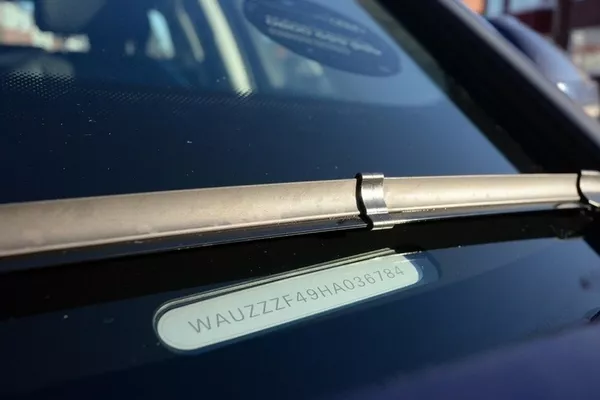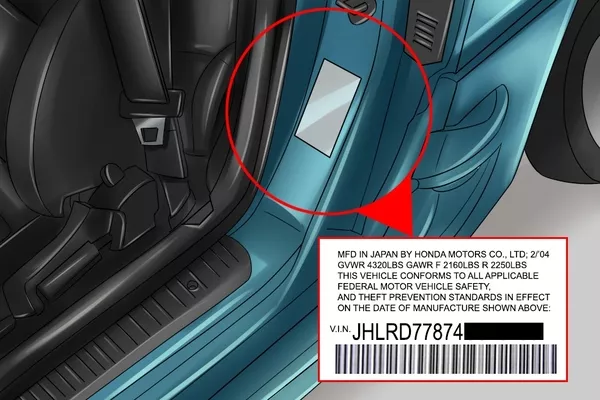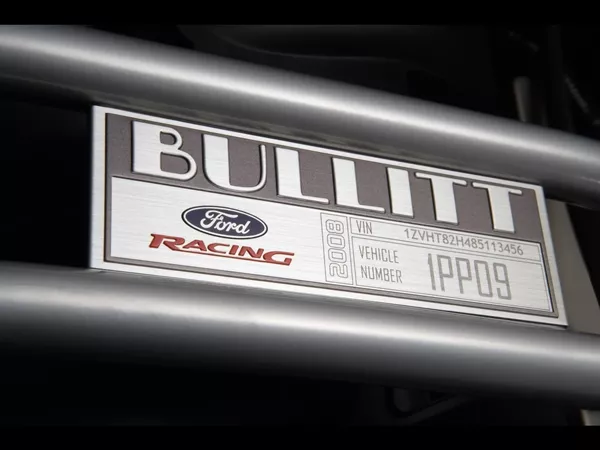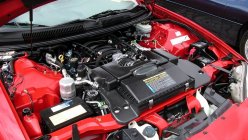Upon purchasing a car, car dealers will offer VIN etching for additional security since it is an anti-theft measure. However, the VIN of each vehicle is more than just a deterrent to car thieves.
This set of numbers is the main hero in every quest for reliable information about every car in the world. For you to better understand the VIN, read on this article from Philkotse.com.
1. What is a VIN?
The VIN is the acronym for Vehicle Identification Number, and it is called by many names. Sometimes it is called VIN code, body number, simply “VIN”, or most of the time, it is redundantly called VIN number, but basically, it is the same thing serving the same function.
Simply put, the VIN of each vehicle is like its fingerprint. It is a unique code utilized by the automotive industry to identify every car, motorcycle, bus, truck and even a trailer. The vehicle identification number of each car can actually tell you a lot about that specific car.

The VIN is the acronym for Vehicle Identification Number
The vehicle identification number of a car is the 17-digit name consists of numbers and characters assigned by the car manufacturer to a specific vehicle. These set of numbers and characters reveal lots of things about the car.
This includes the country of origin, airbag type, model year, engine size, trim level, as well as the plant name. In addition, the car's VIN is also the key to safety. Just visit the National Highway Traffic Safety Administration and enter the VIN in the free search tool. You’ll see if that certain car is subject to a recall.

These set of numbers and characters reveal lots of things about the car
Commonly, the VIN is stamped on the firewall of the engine, in a plate mounted in the driver-side door jamb, or on the dashboard near the windshield.

Commonly, the VIN is stamped on a plate mounted on the driver-side doorjamb
>>> Read more: 7 essential documents needed when purchasing a car in the Philippines
2. Origin of the VIN
As we’ve mentioned earlier, the VIN of the car can tell you lots of information. The first VINs originated in the United States of America and there’s no accepted universal standard, that’s why car manufacturers used different formats.
It was until 1981 when the format of the vehicle identification number was finally standardized by the USA National Highway Traffic Safety Administration.
That's the beginning of the 17-character vehicle identification number made up of capitals and digits. Since then, all on-road cars should have standardized VIN. Additionally, the letters Q, O and I cannot be included to the VIN to avoid confusion with the numbers 0 and 1.
Theoretically, the very complex and specific structure of the VIN should guarantee that each vehicle manufactured since 1981 has a distinct and unique identification code.
This is why it’s almost impossible to spot two cars having the same vehicle identification number. It enables car manufacturers to assign a specific code to the specific vehicle and easily track its history.

It was until 1981 when the format of the vehicle identification number was finally standardized
>>> More useful car buying tips & tricks to avoid hidden fees from dealers.
3. What do VIN symbols mean?
Let’s decode and find out how car manufacturers assign a specific vehicle identification number in a specific car.
The 1st group of three letters and numbers in a vehicle identification number make up the WMI which stands for World Manufacturer Identifier. So, the first three characters will determine the place where the car is produced.
- The first letter or number determines the country where the vehicle is manufactured. VIN codes that start with 1, 4 or 5 produced in the U.S., 2 for Canada and 3 for Mexico. For vehicles made in Finland or Sweden, the letter Y is its VIN’s first character. W for Germany, S for England, K for South Korea and J for Japan.
- The second character tells about the car manufacturer. There are instances where the second character is the first letter of the manufacturer’s name. An example is the letters; N for Nissan, L for Lincoln, G for General Motors, B for BMW and A for Audi. However, the letter “R” can also stand for Audi, and “A” is also used for Mitsubishi or Jaguar. This might be a bit confusing but the next element will tie it all together.
- When combined with the first and second character, the third element indicates the manufacturing division or the type of the vehicle. You can find the list of WMI codes here.

The VIN of each vehicle is like its fingerprint
>>> Grasp your attention: 9 signs to check a used car for accident damage.
The next 6 codes owning the 4th to 9th positions are the vehicle descriptor position.
- The 4th to 8th character describe the vehicle with the following information; body type, model, transmission type, engine code, and restraint system.
- The 9th element is utilized to detect VINs that are invalid. It is also identified as the check digit. The 9th digit varies and it is based on the mathematical formula developed by the U.S. Department of Transportation.
The next group of 8 characters is the vehicle identifier section; it owns the 10th to 17th position.
- The 10th character indicates the model year. For cars with model years 1981 to 2000, the letters from B to Y is used as the corresponding letters to each year. Note that VIN doesn’t use the letters Z, U, Q, O and I. For model years 2001 to 2009, instead of letters, they used the numbers 1 to 9. For the model years, 2010 to 2030, the alphabet or the letters will be used again.

The vehicle identification number of each car can actually tell you a lot about that specific car
This part might also be a bit confusing. To explain a little further, let us show you the corresponding letter or number form the model years 2000 to 2020.
2000= Y, 2001=1, 2002=2, 2003=3, 2004=4, 2005=5, 2006=6, 2007=7, 2008=8, 2009=9, 2010=A, 2011=B, 2012=C, 2013=D, 2014=E, 2015=F, 2016=G, 2017=H, 2018=J, 2019=K, and 2020=L.
- The number or letter in the 11th position indicates the place where the vehicle was assembled or the manufacturing plant. Each car manufacturer has its respective set of plant codes.
- For the last 6 characters owning the 12th to 17th position, this group of numbers indicates the production sequence that each vehicle receives on the assembly line.

VIN is classified into three groups
The vehicle identification number of each car is very useful and essential because it serves as its identification.
All the life events of a specific vehicle from production, inspection, LTO car registration, recalls, accidents, thefts, warranty claims, purchase, insurance coverage, etc. are recorded in different database and registered using the VIN code.
Recent posts
- Used car buying tips: How much should I pay for a used car? Aug 09, 2022
- Top 9 most successful electric vehicles brands in 2019 Jun 28, 2019
- Most carnapped vehicles in the Philippines Jun 26, 2019
- 5 car buying myths you should stop believing! Jan 10, 2019
- How to spot new car owners in the Philippines Aug 02, 2018












